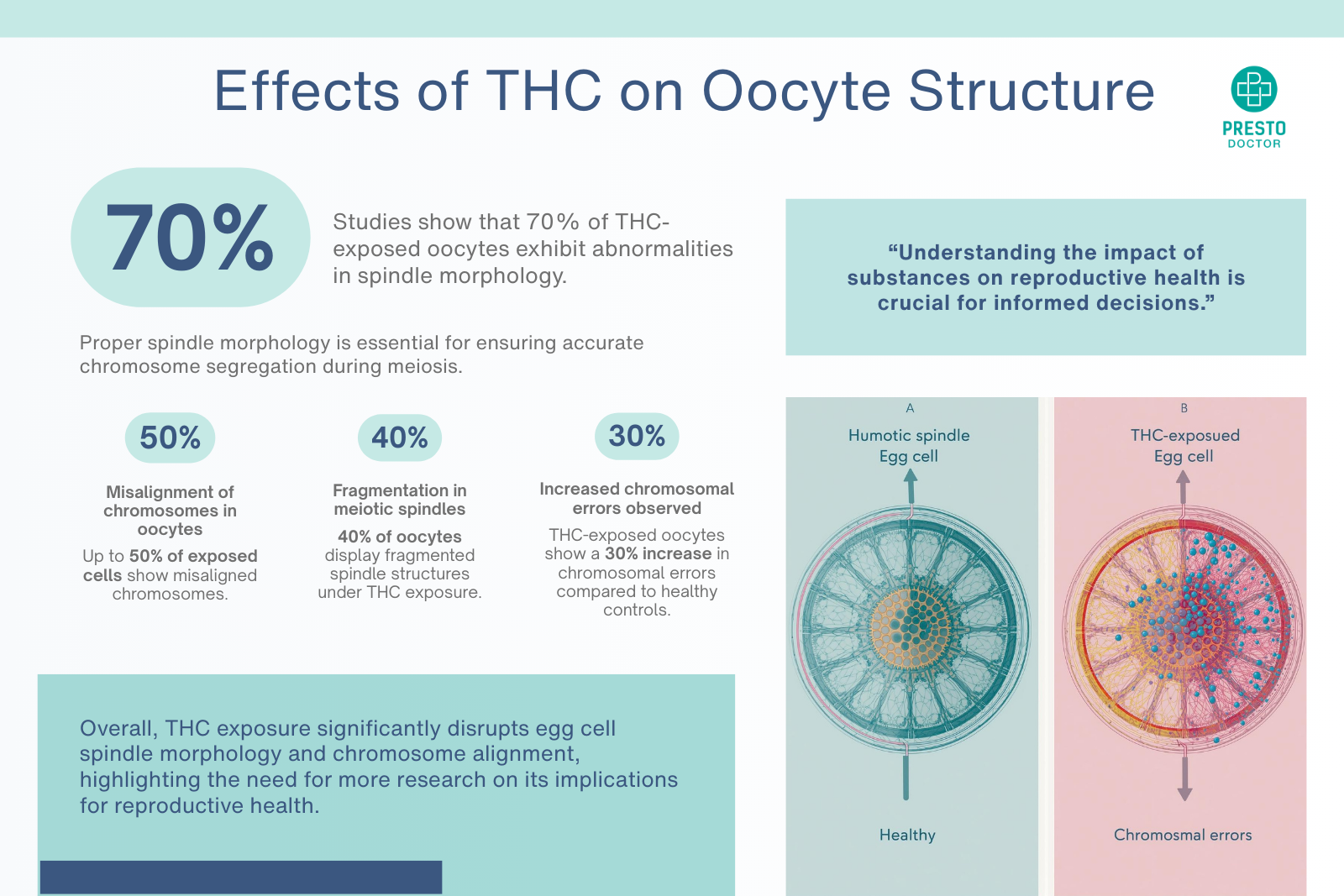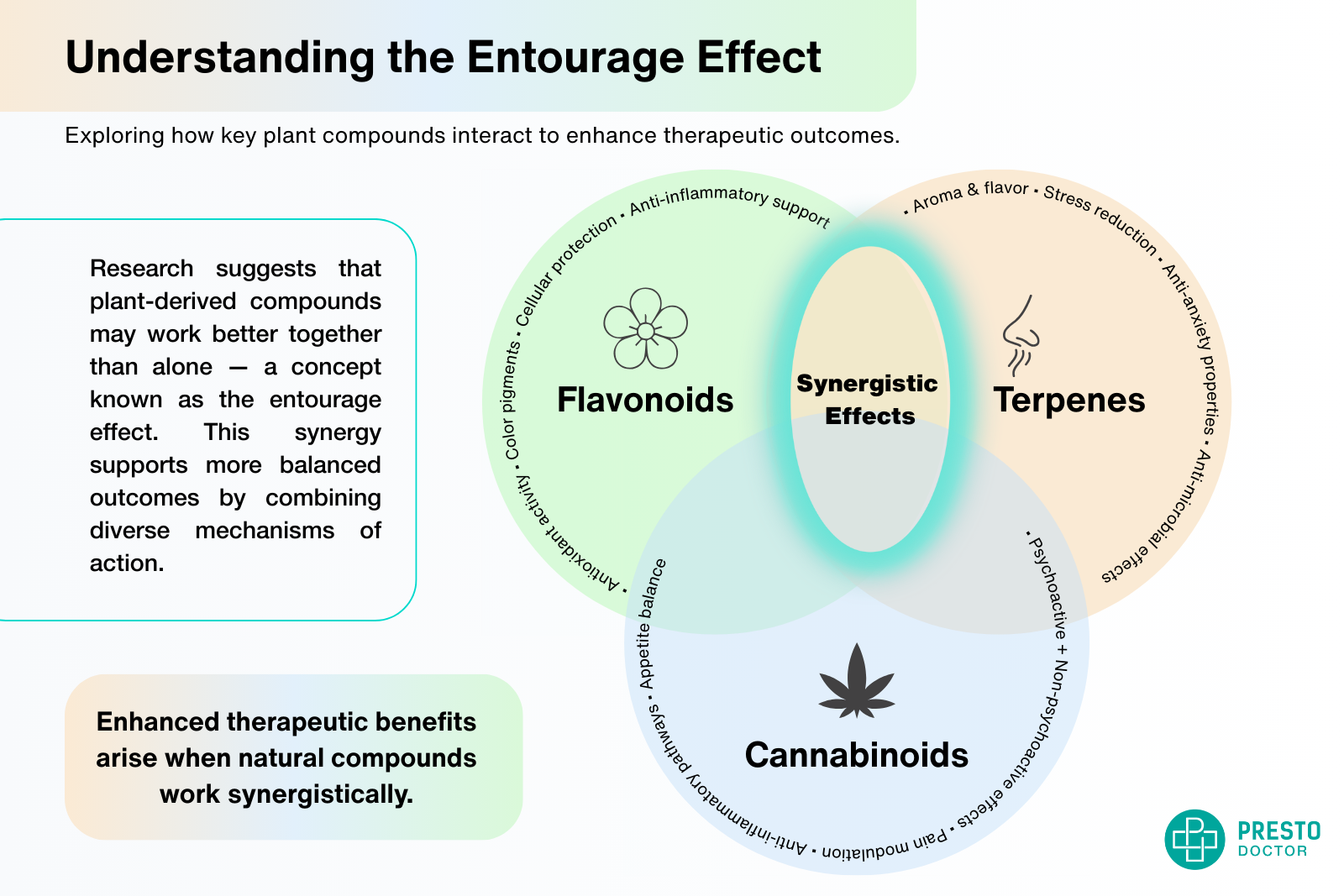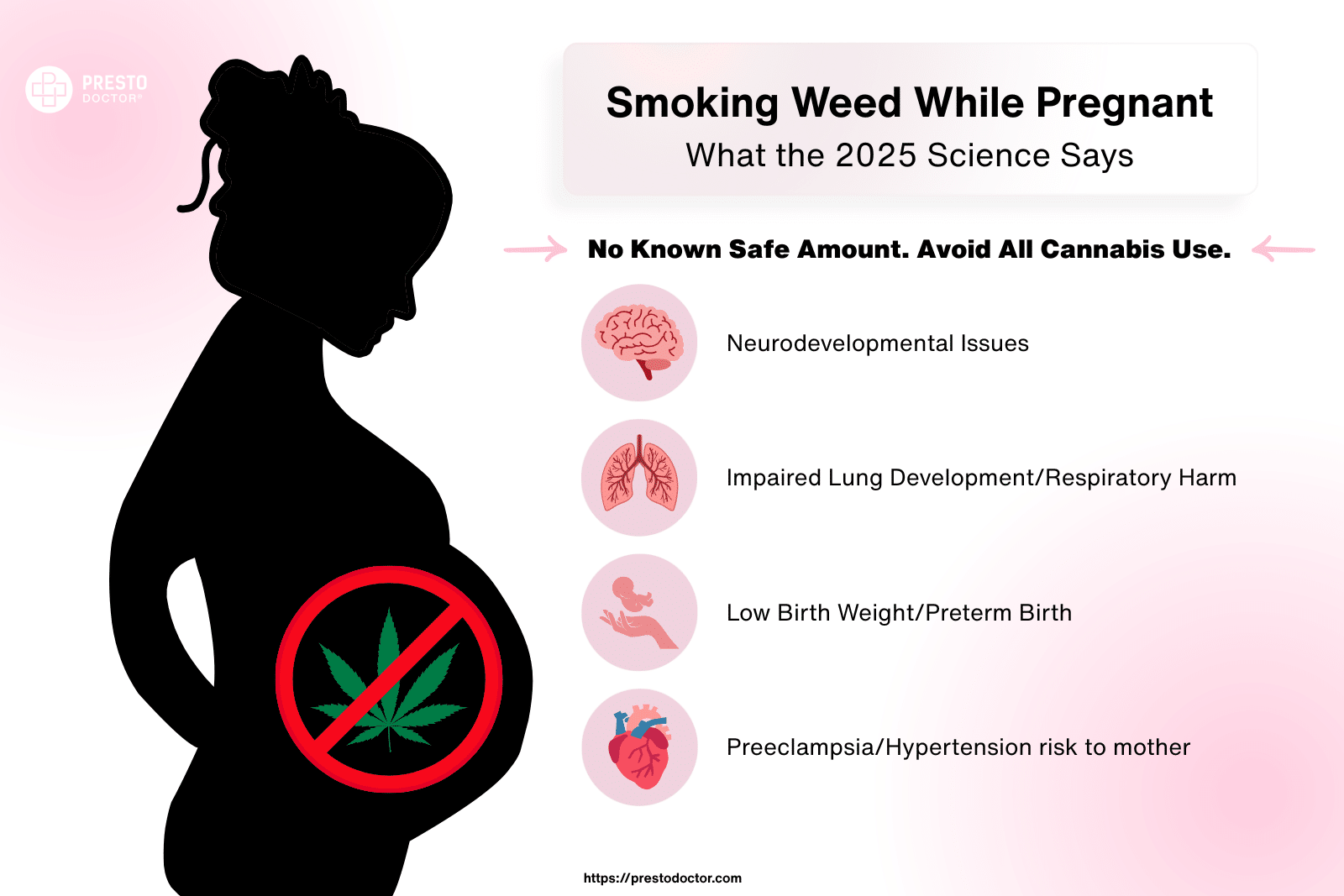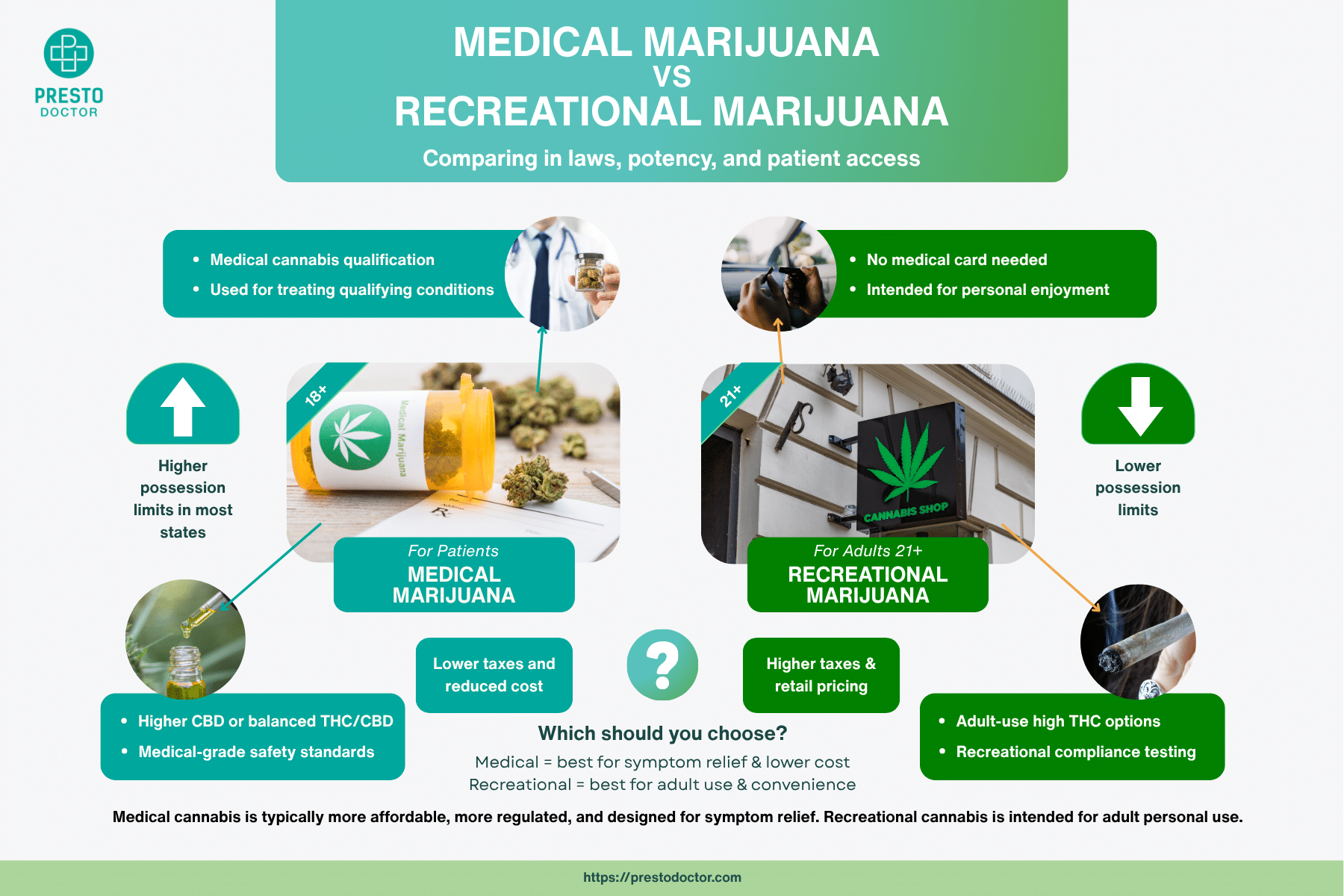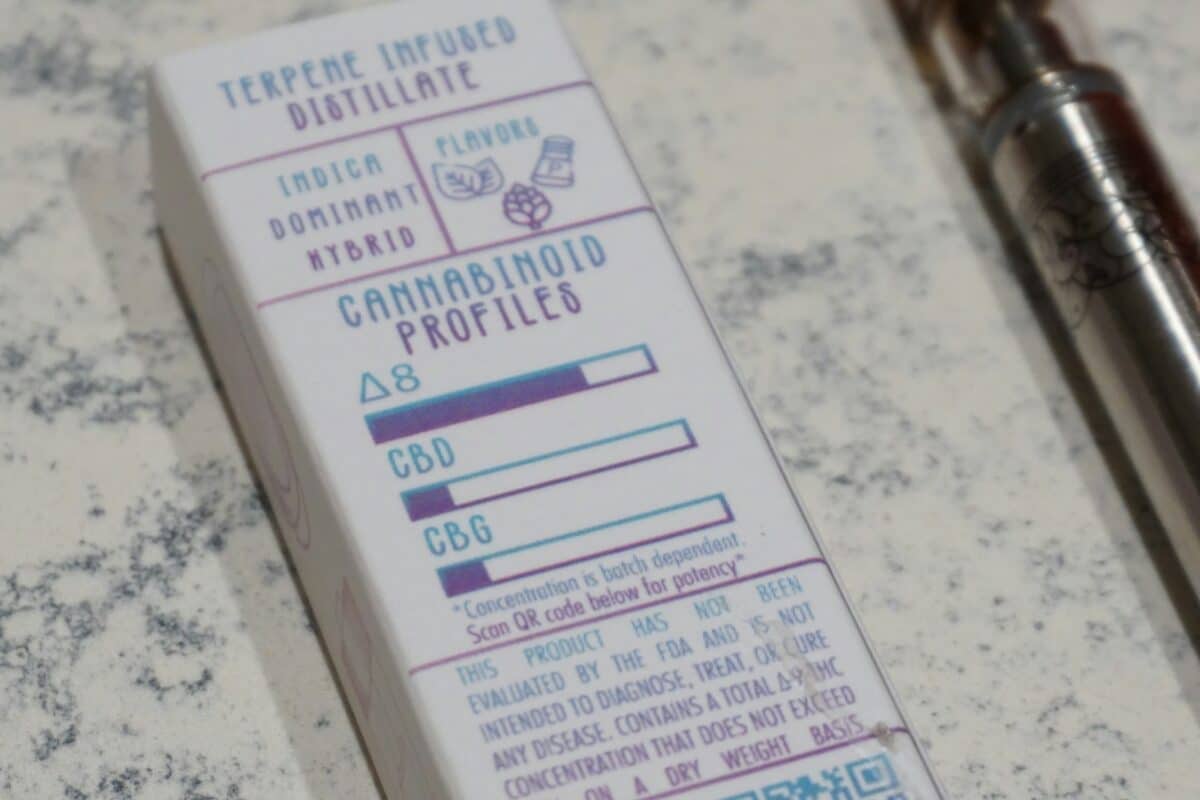
What is TAC (Total Active Cannabinoids)?
TAC stands for Total Active Cannabinoids, a term used to describe the combined percentage of all active cannabinoids in a cannabis product, including THC. These cannabinoids, activated through decarboxylation (heat or light exposure), include THC (Tetrahydrocannabinol), CBD (Cannabidiol), and others such as CBG (Cannabigerol) and CBC (Cannabichromene). Together, these compounds work synergistically to influence the product’s potency and overall effects.
TAC is a critical metric for understanding a product’s full-spectrum potential, potency, and its ability to produce the entourage effect.
What is THC (Tetrahydrocannabinol)?
THC, or Tetrahydrocannabinol, is the most well-known cannabinoid. It binds to the endocannabinoid receptors in the brain to produce the psychoactive “high” commonly associated with cannabis. THC content is just one aspect of TAC that contributes to a product’s overall potency, contributing to both recreational and therapeutic effects.
THC Content in Cannabis
The THC content in cannabis varies by strain and product type. While some strains may contain 20-30% THC, it’s essential to consider the broader TAC measurement for a more comprehensive understanding of a product’s potency.
How Does TAC Differ from THC?
While THC is a single cannabinoid responsible for psychoactive effects, TAC represents the total sum of all active cannabinoids in a product. This distinction is crucial because cannabinoids like CBD, CBG, and CBC contribute additional therapeutic effects.
TAC vs. THC
- TAC: Provides a holistic view of potency by including all active cannabinoids.
- THC: Focuses solely on psychoactive effects.
A product with high-TAC levels can offer a more balanced and versatile experience compared to a high-THC productalone.
TAC vs. THC vs. CBD
CBD (Cannabidiol) is a non-psychoactive cannabinoid included in the total cannabinoid concentration. It offers therapeutic benefits such as:
- Pain relief
- Anxiety reduction
- Anti-inflammatory properties
High-TAC Products
High-TAC products often balance THC and CBD to create specific outcomes, such as relaxation, pain relief, or energy. This balance is especially beneficial for medical users seeking relief without intense psychoactive effects.
Effects of TAC vs. THC
Synergistic Effects of Cannabinoids
- THC influences psychoactive effects directly.
- TAC captures the full range of cannabinoids, enhancing the potential for the entourage effect.
Products with a high Total Cannabinoid Content are more likely to provide synergistic effects, where cannabinoids like CBD, CBG, and terpenes such as myrcene, limonene, and linalool work together to produce potent therapeutic benefits.
TAC in Cannabis Gummies and Edibles
Total Active Cannabinoids in Edibles
Cannabis edibles like gummies often list the Total Cannabinoid Content to indicate the full spectrum of cannabinoids present.
- THC-only edibles: Focus solely on psychoactive effects.
- High-TAC edibles: Offer a broader range of effects by including multiple cannabinoids.
High-TAC gummies may include THC, CBD, and CBG, providing a balanced experience ideal for chronic pain relief and anxiety management.
Does TAC Make You High?
TAC itself does not directly cause a high. The psychoactive effects depend on the percentage of THC within the Total Cannabinoid Content measurement. Other cannabinoids like CBD and CBG can influence the overall experience by mitigating or balancing the psychoactive impact of THC.
Is High TAC Good?
TAC Benefits for Medical Cannabis Users
A high-TAC product is often desirable for both recreational and medical users. Benefits include:
- Balanced effects from multiple cannabinoids.
- Enhanced therapeutic outcomes for conditions like anxiety, chronic pain, and inflammation.
Medical patients seeking cannabis for chronic pain management often prefer high-TAC products for their comprehensive effects.
Is TAC or THC Better for You?
TAC vs. High-THC Products
- High-THC products: Ideal for users seeking strong psychoactive effects.
- High-TAC products: Best for users wanting a full-spectrum experience.
When selecting a product, consider your needs. For therapeutic effects, high-TAC options are often more effective due to the inclusion of multiple cannabinoids.
The Role of Terpenes in Cannabis Potency
Cannabinoid-Terpene Synergy
Terpenes like myrcene, limonene, and linalool enhance TAC’s effects by:
- Improving cannabinoid binding with endocannabinoid receptors.
- Modulating the intensity of effects (e.g., reducing anxiety or enhancing relaxation).
A high total cannabinoid concentration product with myrcene may offer enhanced sedative effects, making it ideal for sleep support.
FAQs About TAC and THC
TAC includes all active cannabinoids like THC, CBD, CBG, and CBC.
Yes, it provides a holistic measure of a product’s strength.
Look for balanced cannabinoid profiles to achieve desired effects.
A high-TAC but low-THC product contains significant amounts of other cannabinoids, such as CBD and CBG, which can deliver therapeutic benefits without causing strong psychoactive effects. These products are ideal for users seeking relief without the intensity of THC-induced intoxication.
Terpenes enhance the total cannabinoid concentration’s effects through the entourage effect, where these aromatic compounds work alongside cannabinoids to influence a product’s therapeutic potency and psychoactive properties. They also contribute to the product’s aroma and flavor, further shaping the overall user experience.
Yes, TAC labeling helps users make informed choices by showing the full cannabinoid content.
The Role of TAC in the Entourage Effect
The entourage effect describes the synergistic interaction between cannabinoids and terpenes. The combined cannabinoid profile plays a significant role in the entourage effect by combining all active cannabinoids, amplifying therapeutic and recreational benefits.
The entourage effect extends beyond cannabinoids, as terpenes also play a vital role in modulating effects. For instance, terpenes like myrcene, limonene, and linalool, often found in high-TAC products, enhance the cannabinoids’ ability to bind with receptors in the endocannabinoid system. This cooperation not only improves therapeutic efficacy but also reduces the likelihood of adverse effects, such as paranoia or extreme sedation, that can occur with isolated THC products.
Research suggests that high-TAC products, particularly those emphasizing the full spectrum of cannabinoids and terpenes, offer broader benefits for both recreational and medical users. These findings highlight the importance of considering TAC as a critical factor when selecting cannabis products for specific conditions or general use.
For more in-depth insights, review the study on cannabinoid-terpene synergy and its therapeutic implications: Cannabis-Based Medicinal Extracts and the Entourage Effect.
Scientific References: The Importance of TAC in Cannabis Effects
Research underscores the critical role of Total Active Cannabinoids (TAC) in enhancing the entourage effect, a phenomenon where cannabinoids, terpenes, and other compounds work synergistically to amplify therapeutic and psychoactive benefits. This synergy makes the Total Cannabinoid Content a more comprehensive measure of a product’s potential efficacy than THC alone.
For example, a study published in the National Library of Medicine explains how the Total Cannabinoid Content plays a pivotal role in managing conditions such as anxiety, chronic pain, and inflammation by leveraging the interplay of cannabinoids and terpenes. The research highlights that the presence of multiple cannabinoids, including THC, CBD, CBG, and CBC, in varying ratios, can lead to more significant therapeutic outcomes compared to isolated cannabinoids.
Key Findings From Research
- Anxiety Management: Studies have shown that products with balanced TAC, including cannabinoids like CBD and CBG alongside THC, may help reduce anxiety symptoms without inducing the intense psychoactive effects typically associated with high-THC products.
- Link to study: The Role of Cannabinoids in Anxiety Regulation
- Chronic Pain Relief: The combination of THC and CBD, two primary components often included in TAC measurements, has been found to significantly alleviate chronic pain. The presence of additional cannabinoids and terpenes enhances this effect by interacting with the body’s endocannabinoid system.
- Link to study: Cannabinoids and Chronic Pain: A Review
- Inflammation Reduction: Products with high TAC levels, particularly those rich in non-psychoactive cannabinoids like CBD and CBG, have demonstrated strong anti-inflammatory properties, making them valuable for conditions like arthritis or autoimmune diseases.
- Link to study: Anti-Inflammatory Effects of Cannabinoids
Scientific studies reinforce the significance of TAC in optimizing cannabis’s effects. By focusing on the total active cannabinoids rather than just THC, consumers and patients can experience enhanced benefits tailored to their needs, whether for pain relief, anxiety management, or inflammation control. TAC-focused cannabis products represent the future of informed and effective cannabis consumption.
Choosing Between High-TAC and High-THC Products
When selecting cannabis products, consider your goals. High-TAC options offer versatility, while high-THC products deliver stronger psychoactive effects. Always check labels for clarity and consult with a budtender if needed.
Real-Life Examples
High-TAC strains such as Blue Dream and OG Kush are excellent options for consumers seeking balanced effects. These strains combine THC with minor cannabinoids like CBD and CBG, enhancing both recreational and therapeutic benefits. On the other hand, high-THC strains like Girl Scout Cookies focus on delivering intense psychoactive effects but lack the cannabinoid diversity found in high-TAC products. For edibles, products like CBDfx Gummies with Multivitaminsincorporate THC, CBD, and other cannabinoids to create a well-rounded, therapeutic experience.
Unique Angles
TAC is increasingly recognized as a critical indicator of quality in the cannabis market. Full-spectrum products, which maximize TAC by including a wide range of cannabinoids and terpenes, are becoming more popular for their holistic effects compared to isolates that focus on single cannabinoids. Additionally, TAC-focused products offer significant benefits for individuals managing conditions like chronic pain, anxiety, or sleep disorders. These products provide comprehensive relief through the interplay of multiple cannabinoids and terpenes, enhancing both therapeutic and recreational experiences.
Data and Statistics
The TAC percentage in cannabis products typically ranges from 15-30%, with premium full-spectrum options often exceeding 30%. This metric provides a more comprehensive view of a product’s potency compared to THC content alone. Furthermore, some states, such as California, now require TAC labeling, helping consumers make informed decisions based on a product’s full cannabinoid profile.
Why Total Active Cannabinoids Matter
Understanding TAC helps consumers make informed choices about cannabis products, ensuring they select options that align with their desired effects and potency levels.
TAC vs. CBD
While CBD is included in TAC, choosing a CBD-dominant product depends on your preference for non-psychoactive, therapeutic benefits. TAC-rich products often combine CBD with other cannabinoids for enhanced effects.
Comparing TAC Levels in Different Strains
Strains with high TAC levels tend to offer more balanced effects, while low-TAC strains may focus on specific outcomes like relaxation or energy. Popular strains like OG Kush and Blue Dream showcase the variety of TAC profiles.
Key Takeaways
By understanding the differences between Total Active Cannabinoid content and THC, consumers can better navigate the cannabis market to find products that suit their needs. Whether you seek recreational potency, therapeutic relief, or balanced experiences, TAC offers a more comprehensive measure than THC alone.


